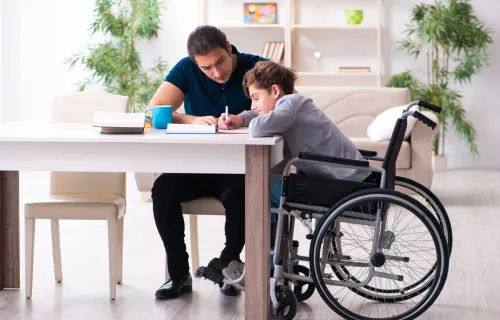A positive patient experience depends on many factors, one of which is the quality and variety of food served by a health organization. In the fall of 2019, Palmia, a facilities company for the City of Helsinki in Finland, conducted a study on the impact of hospital food services on the overall patient experience.
Kanta-Häme Hospital District was one of the respondents in the study, and its responses strongly highlighted the importance of tasty meals and patients’ freedom to choose their meals. This shared vision was a starting point for a joint innovation project between Palmia and CGI.
“We wanted to reform hospital food services by enabling patients to choose their own preferred meals, which would improve both patient intake and patient recovery overall,” explains Sari Lipasti, Business Unit Director at Palmia. “There are other positive effects as well; for example, a reduction in leftovers and other food waste.”
Before the development project began, internal discussions took place regarding the right production model and functionalities to be implemented. Technology and digitalization were the focus of discussions right from the start.
“We had to plan how patient orders would be delivered to kitchen personnel and how their dietary restrictions would be taken into consideration,” says Palmia’s Chief Digitization Officer Riku Moisio. “This was our biggest challenge, and it is a question that needs to be addressed in all healthcare development initiatives. In healthcare, patient safety always is a top priority.”
Enhancing the healing impact of hospital food
Patient well-being has long been at the center of operations for health facilities within the Kanta-Häme Hospital District. The district actively promotes a "patients first" philosophy, which aims at providing patients with excellent health care and a patient experience that exceeds their expectations.
“Our philosophy led to our involvement in this project to increase patient meal options, one of our long-held objectives," says Heini Karp, Food Services Manager at Kanta-Häme Hospital District. "Patients are more likely to finish their meals if the food is tasty and in accordance with personal preferences, which then can have a positive impact on their overall recovery."
The project's purpose was to implement a user-friendly solution that can be seamlessly integrated in the food production process. CGI developed the solution as an extension of CGI Aromi, which already was in use within the district. Thanks to CGI Aromi and CGI's food industry and technology expertise, risks related to integrating a new solution within the district's existing ERP system were significantly lower.
“The project was piloted in Hämeenlinna in November 2020. We gained valuable experience and in-depth knowledge of patient needs and wishes regarding their choice of meals,” says Palmia’s Sari Lipasti. “The project started in January 2021. We concentrated on development tasks until May, and, in June, we had completed an operational model. In early summer, we moved on to the technical implementation of the order channel. The new model was then tested and put into production in February 2022.”
Strengthening ecosystem collaboration
Palmia’s CDO Riku Moisio emphasizes that the project was successful because of digitization and integration. The new food service was seamlessly integrated within the district's health ecosystem. It is compatible, for example, with the district's patient data system and with its Oma Raitti online service platform. The solution also uses the district's shared Suomi.fi authentication system.
“A patient with hospital permission to order meals can access the Oma Raitti platform where they will find the new food service and its meal options," explains Moisio. "Oma Raitti is an online services platform integrated with the hospital district’s own digital services."
Key success factors in the project were well-implemented integration and open communication between various stakeholders. The steps taken and lessons learned will benefit other public administration digitalization projects.
"Our challenge is to identify and create coherent ecosystems to produce a patient-oriented experience," says Moisio. "I believe we reached that goal with this project."
Lessons learned
Identify what will be digitized and why
Clearly outline the development target
Take enough time to evaluate processes and operating models
Leverage the expertise and technical skills of partners
Implement the system as a part of an existing ecosystem
Test and pilot the service prior to rollout




